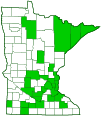ferruginous tiger crane fly
(Nephrotoma ferruginea)
Conservation • Description • Habitat • Ecology • Distribution • Taxonomy
|
|
||||||||||||||
Description |
With over 15,000 described species, the family Tipulidae (crane flies) is one of the largest families of true flies (Diptera). More than 1,600 species occur in North America. The subfamily Tipulinae (large crane flies) contains the largest crane flies. In North America, the vast majority of species are in the genera Tipula and Nephrotoma. The genus Nephrotoma (tiger crane flies) contains about 150 described species. The most common of these is ferruginous tiger crane fly (Nephrotoma ferruginea). “Ferruginous” means reddish-brown or rust colored, and this is the feature that gives the crane fly its common name. However, it is more often described as orange in color. Adults are ½″ to ⅝″ (12 to 16 mm) in length. Like all tiger crane flies, they have a polished appearance, shiny or slightly shiny. The head is orange above. The snout is short and has a beak-like point. The lower jaws (maxillae) have sensory structures (palpi) attached. The last segment of each palp is antenna-like and very long, much longer than the subapical segment. There are two large, black, compound eyes and no simple eyes (ocelli). The antennae have 14 segments. They are black except for the first two segments (scape and pedicel), which are orange. The exoskeletal plate covering the front part of the thorax (prescutum) is orangish-yellow with three broad, orange, longitudinal stripes. The plate covering the middle part (scutum) is orangish-yellow with two large orange spots, making it appear mostly orange. A distinct, V-shaped groove (transverse suture) on top near the wing bases separates the prescutum and scutum. There is a black spot at each end of the transverse suture. The abdomen is long, slim, and brownish-yellow. The first six segments have a black spot above. The legs are stilt-like, very long, very slender, and very fragile, easily separated from the body. The wings are very long and very narrow. Each wing has two anal veins that meet the inner margin. |
Size |
Total length: ½″ to ⅝″ (12 to 16 mm) |
Similar Species |
Habitat |
Suburbs, open woodlands, oak-hickory forests, riversides, grasslands, pasture lands, lawns, cultivated crops. |
Ecology |
Season |
April to early October. Most common May to September. Two generations in the northeast: May through June and mid-August to mid-September. |
Behavior |
It rests with its wings held flat over its body. |
Life Cycle |
|
Larva Food |
Decaying plant matter, grass roots |
Adult Food |
|
Distribution |
||
|
Sources Biodiversity occurrence data published by: Minnesota Biodiversity Atlas (accessed through the Minnesota Biodiversity Atlas Portal, bellatlas.umn.edu, 6/24/2025). |
|
| 6/24/2025 | ||
Occurrence |
||
Common |
||
Taxonomy |
|
Order |
|
Suborder |
Nematocera |
Infraorder |
|
Superfamily |
Tipuloidea (typical crane flies) |
Family |
|
Subfamily |
|
Genus |
Nephrotoma (tiger crane flies) |
Attempts to segregate the subfamily Tipulinae into tribes has been unsuccessful due to the near constant addition of new species and genera. |
|
Subordinate Taxa |
|
Some sources recognize the subspecies Nephrotoma ferruginea surtularis. Other sources consider consider that the distinct species Nephrotoma surtularis. |
|
ferruginous tiger crane fly (Nephrotoma ferruginea ferruginea) ferruginous tiger crane fly (Nephrotoma ferruginea surtularis) |
|
Synonyms |
|
Nephrotoma beutenmuelleri Nephrotoma latevittata Nephrotoma proxima Nephrotoma quadrilineata Pachyrhina beutenmuelleri Pachyrhina latevittata Pachyrhina quadrilineata Tipula alternata Tipula proxima |
|
Common Names |
|
ferruginous tiger crane fly |
|
Glossary
Maxillae
Paired mouth structures of arthropods located immediately behind the mandible and used for tasting and manipulating food. “Under-jaws”.
Ocellus
Simple eye; an eye with a single lens. Plural: ocelli.
Palp
Short for pedipalp. A segmented, finger-like process of an arthropod; one is attached to each maxilla and two are attached to the labium. They function as sense organs in spiders and insects, and as weapons in scorpions. Plural: palpi or palps.
Scutum
The forward (anterior) portion of the middle segment of the thorax (mesonotum) in insects and some arachnids.
Visitor Photos |
||
Share your photo of this insect. |
||
This button not working for you? |
||
Alfredo Colon |
||
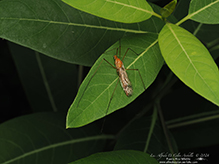 |
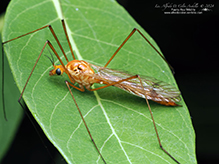 |
|
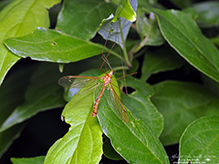 |
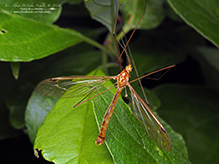 |
|
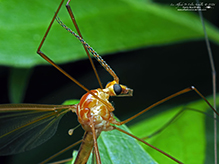 |
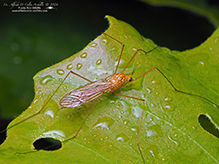 |
|
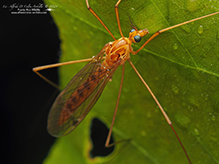 |
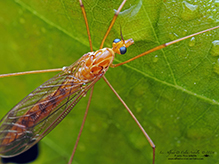 |
|
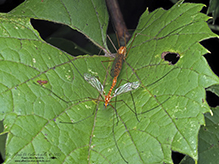 |
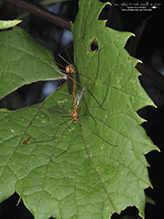 |
|
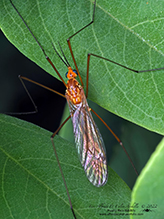 |
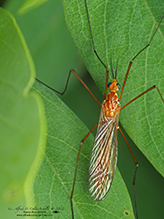 |
|
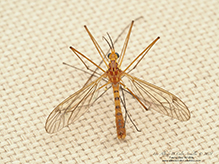 |
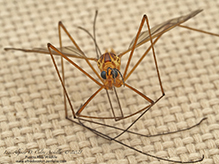 |
|
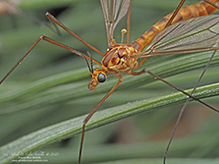 |
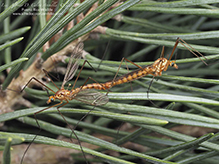 |
|
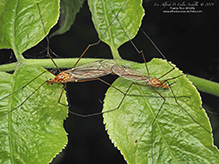 |
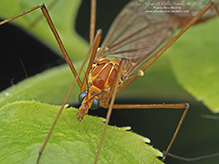 |
|
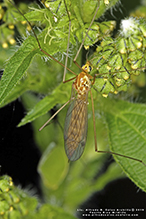 |
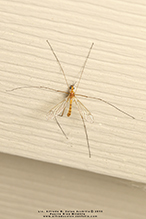 |
|
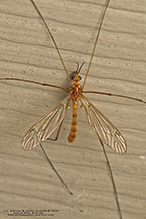 |
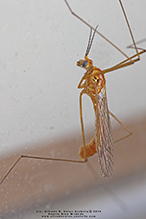 |
|
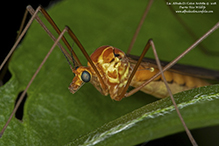 |
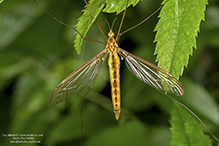 |
|
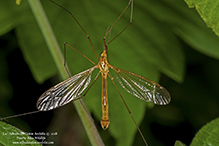 |
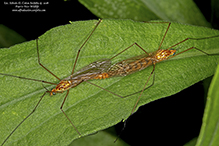 |
|
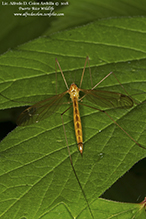 |
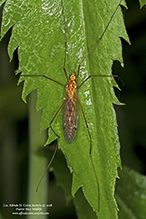 |
|
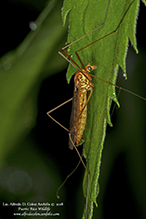 |
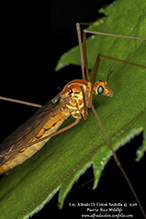 |
|
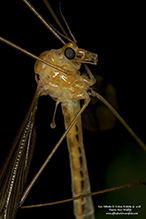 |
||
Nina Chafee |
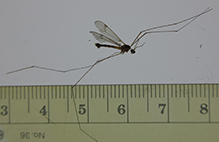 |
This was collected as part of a barcoding lab, it was sequenced and identified as Nephrotoma ferruginea. |
MinnesotaSeasons.com Photos |
||
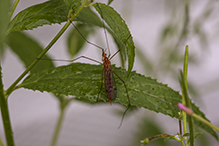 |
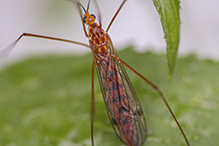 |
|
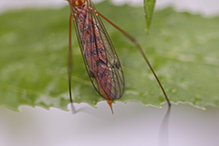 |
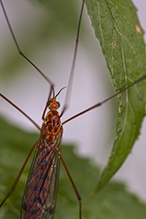 |

Slideshows |
|

Visitor Videos |
||
Share your video of this insect. |
||
This button not working for you? |
||
|
Other Videos |
||
|

Visitor Sightings |
||
Report a sighting of this insect. |
||
This button not working for you? |
||
| Alfredo Colon 7/7/2024 |
Location: Albany, NY |
 |
| Alfredo Colon 6/12/2024 |
Location: Albany, NY |
 |
| Alfredo Colon 6/10/2024 |
Location: Albany, NY |
 |
| Nina Chafee 10/8/2023 |
Location: Haverford, PA This was collected as part of a barcoding lab, it was sequenced and identified as Nephrotoma ferruginea. |
 |
| Alfredo Colon 8/19/2022 |
Location: Albany, NY |
 |
| Alfredo Colon 8/15/2022 |
Location: Albany, NY |
 |
| Alfredo Colon 6/4/2021 |
Location: Woodbury, MN |
 |
| Alfredo Colon 6/1/2021 |
Location: Woodbury, MN |
 |
| Alfredo Colon 5/30 to 6/1/2021 |
Location: Woodbury, MN |
 |
| Alfredo Colon 8/8/2019 |
Location: Woodbury, MN |
 |
| Alfredo Colon August 2019 |
Location: Woodbury, MN |
 |
| Alfredo Colon 8/26/2018 |
Location: Woodbury, MN |
 |
MinnesotaSeasons.com Sightings |
||
Lakeville, MN |

Created: 7/13/2019 Last Updated: © MinnesotaSeasons.com. All rights reserved. |
